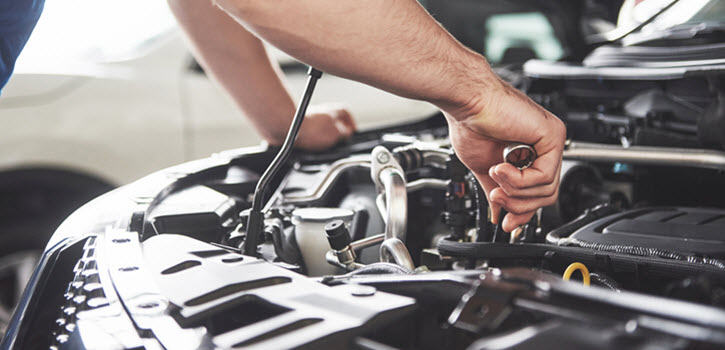
Why do Car Engines Sputter at Low Speeds?
13 Oct, 18
If you have ever driven a manual transmission vehicle, you know the different sounds that the engine makes concerning how much gas you are giving it. There is often a deep kind of rumble or sputter at very low speeds. However, when these sounds become more frequent when you are driving, or if you begin to notice them at all in an automatic transmission, it may be a sign that your car is in need of a tuneup.
The Difference Between Low and High Speeds in Engines
There are several forces at work in your engine that are converted into speed as you drive your car. Two important ones are torque and RPM (revolutions per minute).
If you have ever used a screwdriver to drive a new screw into wood, then you have experienced both of these forces. It is always hardest at the beginning and takes more power to get the screw started. That initial rotating force you have to use to get it started is torque. Once you get the screw turning, it usually eases up a little (unless you run into a knot) and the circular motion helps carry the force, so you add a smaller amount of torque energy just to keep it going. This is the power of RPM. Once you get the RPM up in the screw, it begins to move into the wood at a faster speed.
Your car operates the same way. Although it may take more force to get it going, as it gains momentum through RPM, it begins to carry itself. That is also why your car often accelerates faster once it has already reached higher speeds. The one caveat to this correlation is that your vehicle will switch gears once it has reached a peak RPM (in automatic transmissions, you have to do this yourself in manuals). If it does not shift gears, it will not accelerate further, and you may damage your engine pushing it to go faster.
Possible Causes of Engine Sputtering
Sputtering in the engine is typically caused by an incorrect mixture of air and fuel in the engine. This problem can come from several different sources depending upon your car age and type.
1. If you have an older car with a carburetor, you may have a problem with your accelerator pump that gives the intake manifold extra fuel when needed under low RPM.
2. Newer cars are accelerated by electronic fuel injection systems. If your car was manufactured in the year 2000 or later, your EFI might be misinterpreting a sensor. The three sensors to check are the Manifold Absolute Pressure sensor, the Throttle Position Sensor, and the Mass Airflow sensor.
3. The last cause of incorrect air and fuel mixture may be your ignition system – specifically your spark plugs, plug wires, and ignition coil. These may be dirty, wet, or have grown weak with too much use over time. Additionally, you may have filters that are clogged, which is not allowing enough air in to promote combustion.
How to Correct Engine Sputtering
Filters can be changed on your own and relatively inexpensively, but if you have a newer car with sensors, you need a diagnostic tool to isolate the problem of engine sputtering. Trying to do it yourself in the attempt to save money may end up costing you more in your trial and error process. If you take your sputtering vehicle to a professional auto technician, they will likely be able to fix the problem the first time.

When it is time to get your engine inspected…
Look no further than Santa Barbara Autowerks for the service you can trust. We are a premier European Auto service station in Santa Barbara, CA that gives you and your car the care you need. We operate under a holistic service policy, which means that we will look over your whole vehicle when you bring it in, regardless of the problem. This way, we are able to identify any potential problems early and take care of them before they become critical problems that threaten your safety. Santa Barbara Autowerks is looking out for you, so if you notice your engine sputtering, contact us for a checkup today.




